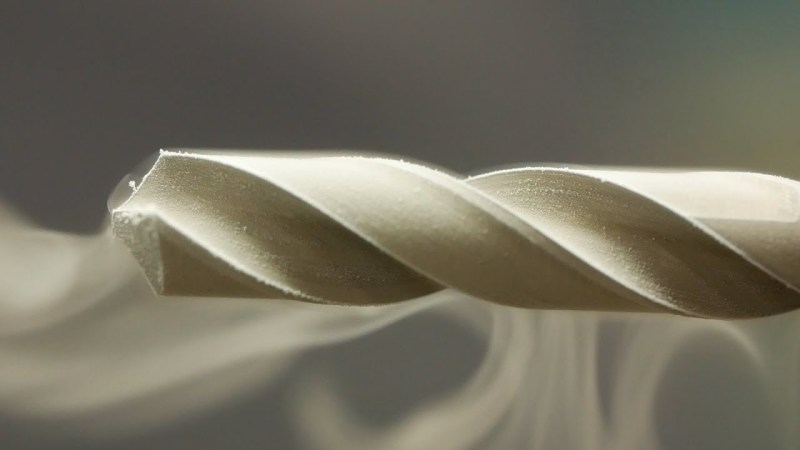There are a lot of ways that metals can be formed into various shapes. Forging, casting, and cutting are some methods of getting the metal in the correct shape. An oft-overlooked aspect of smithing (at least by non-smiths) is the effect of temperature on the final characteristics of the metal, such as strength, brittleness, and even color. A smith may dunk a freshly forged sword into a bucket of oil or water to make the metal harder, or a craftsman with a drill bit might treat it with an extremely cold temperature to keep it from wearing out as quickly.
Welcome to the world of cryogenic treatment. Unlike quenching, where a hot metal is quickly cooled to create a hard crystal structure in the metal, cryogenic treatment is done by cooling the metal off slowly, and then raising it back up to room temperature slowly as well. The two processes are related in that they both achieve a certain amount of crystal structure formation, but the extreme cold helps create even more of the structure than simply tempering and quenching it does. The crystal structure wears out much less quickly than untreated steel, therefore the bits last much longer.
[Applied Science] goes deep into the theory behind these temperature treatments on the steel, and the results speak for themselves. With the liquid nitrogen treatments the bits were easily able to drill double the number of holes on average. The experiment was single-blind too, so the subjectivity of the experimenter was limited. There’s plenty to learn about heat-treated metals as well, even if you don’t have a liquid nitrogen generator at home.
Thanks to [baldpower] for the tip!
















Cryogenic quenching is also used for some alloys that would not otherwise harden. Quenching to room temperature oil etc. won’t remove heat fast enough because the heat flow slows down as the temperatures equalize, so the alloyed metals and additives have time to separate and clump up, leaving pure iron between them, resulting in soft steel.
In the extreme case, dunking the red-hot metal in a cryogenic medium freezes the austenite phase itself, which creates an amorphous structure, otherwise known as metallic glass. This obviously only works for small or thin pieces though.
I’ve wondered if liquid N2 could be used to “case harden” something like a knife or drill bit by getting red-hot and giving it a quick dunk and removing it before the total volume has cooled. The idea would be to have a hard outer surface with a more resilient core.
interesting idea but I think you would just end up with cracks on the surface. think about it, the bit that has rapidly cooled would suddenly shrink while still attached to something that hasn’t. The only way it could do that is if it pulled itself apart.
I have used a similar method except not being able to get my hands on Liquid Nitrogen i ended up using Meths and Dry Ice. It will not go down to such a low temperature but it defiantly makes a difference. And if you use disposable razors it works really well :)
What did you use the extra hardened razor blades for?
this is really pretty old technology. I know I was using it in a project in 1994 and the company that did the treatment to the machine tooling then called it reverse annealing. not sure why this would be considered a hack at this point since it has been around and people have been doing it for a long time. what next someone doing blacksmith work dunking their metal into a vat of oil would be considered a hack……
I think the hack is a dude doing it in his garage with a homemade cryo cooler and then using the electron microscope that is also in his garage to compare the different crystalline structures. As opposed to sending it to a black box company.
This as a treatment is available for some high-end audio cables, cable connectors and speaker terminals.
I’ve never heard the A vs. B comparison.
Used to be rather popular among the higher-end DIY crowd. No idea if it’s still a thing.
also some bass strings too
Oh all right! I’ll be the one. You mean “low temperature”. There is no such thing as a cold temperature.
They’ve been cryo-treating transmission gears and some engine parts for decades now, in certain cases. This isn’t exactly new tech, but the presentation is nice.
Great presentation and detail. I haven’t seen a microanalysis image in a while and cool to see regarding cryo-treating since I’ve never seen before. There is another video regarding cryo-machining of rubber and his reference to the Raman spectrometer is neat too. Ben always has awesome videos.
Amazing article Bryan! Cryogenic treatment has many advantages over quenching. Apart from increased durability, cryogenic treatment offers better electrical and thermal properties.